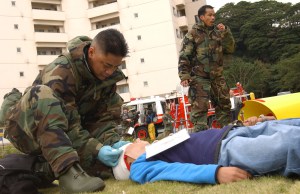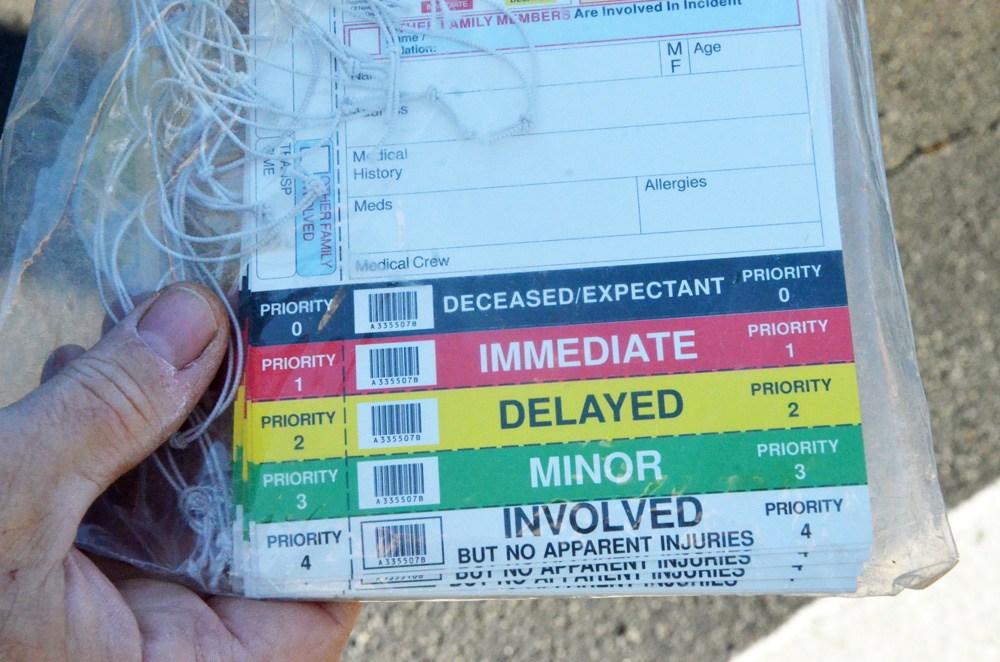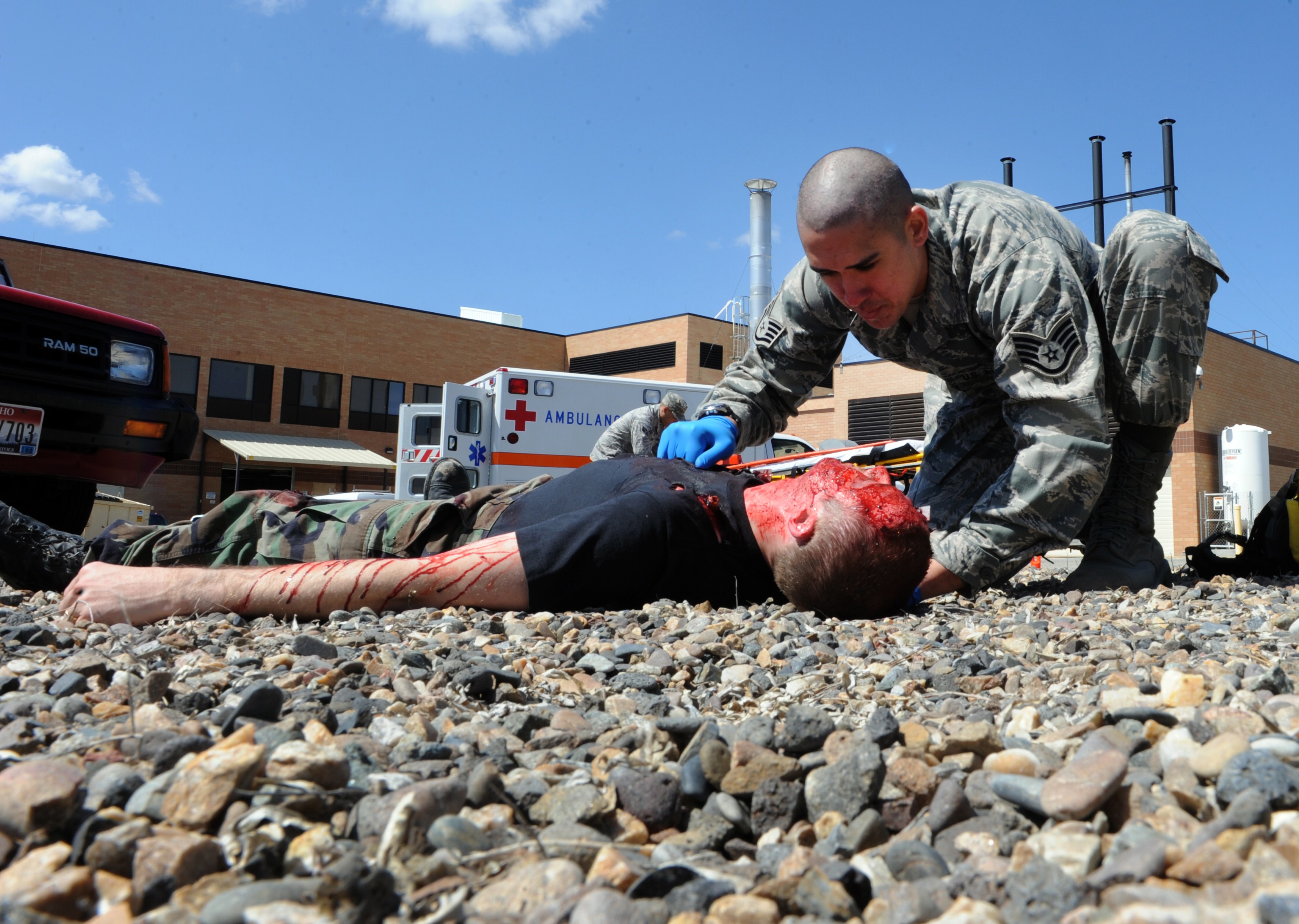
Helping others
It has been discussed here at Final Prepper that helping others may be a vital component to your survival strategy. While protecting yourself against bandits and those that want to do you harm is a top concern for individuals and groups when SHTF, you are likely to come across situations where helping your own group or helping those you come across will not only be the right thing to do ethically, but will also be tremendously advantageous to your situation.
But following major natural disasters or other sudden, large-scale emergencies, first aid, even advanced medical services, may not be enough. Here are some other factors to consider when preparing your skills and gear for coping with a disaster event.
Organization and Triage
Effectively organizing a disaster scene can be as difficult and as important as directly treating victims. Prioritizing which survivors are in need of immediate care, cordoning off sections for different levels of need, and helping those who will most benefit from immediate attention can reduce treatment times, decrease the burden on those administering aid, and bring some sense of order to what is sure to be a chaotic scene.

Triage Code tags makes identifying and prioritizing people with injuries simpler.
The practice of triage is a time-tested method for effectively managing personnel and resources in the immediate aftermath of a disaster. The system works by categorizing victims into three categories:
- Those who are likely to live without treatment – survivors with only bumps and bruises, non life-threatening injuries, and unharmed bystanders can be immediately categorized as low priority.
- Those who are unlikely to live regardless of treatment – Medical personnel working in the field can often do little for those who are barely clinging to life, and while every life counts, there are likely victims who could benefit much more from immediate attention.
- Those whose lives could be saved by immediate care – these are the highest priority victims, and should be where medical personnel’s resources should be focused in the early stages. Victims who need tourniquets to stop bleeding, burn kits to mitigate damage, and measures to avoid victims going into shock can all be applied immediately in the field and can be the difference between life and death for the victims.
Prioritizing survivors in this way can be facilitated with triage kits that include color-coded tags, tarps, and markers. While you may not be able to set up a perfect triage clinic in the immediate aftermath of a disaster, being familiar with how these operations are organized, and preparing yourself with the adequate tools for the job can go a long way.
Communication
Natural disasters like earthquakes, tsunamis, and tornadoes can come without warning, leaving victims tremendously disoriented and potentially panicked. Similarly, building collapses, terrorist attacks, and structural fires have the tendency to induce chaos and confusion in their aftermath. In a situation where the institutions we depend on to return order to a scene are no longer able to fulfill that function, you may need to contribute to restoring calm and jump starting life-saving procedures.

MOUNTAIN HOME AIR FORCE BASE, Idaho Staff Sgt. Kalani Kaauamo, 366th Medical Group, performs triage after a simulated car accident at the base hospital.
2-Way radios – 2 Way radios can be essential tools for communicating both with off-scene resources as well as on-scene organizers who are managing resources. Having a few 2-Way radios and spare batteries will help you get the most out of personnel.
Bullhorns – Sometimes, you need to communicate to a large audience all at once. Giving instructions, warnings, tips, or procedures during the commotion of a disaster scene can be impossible without the aid of technology. Using bullhorns can help speed up the communication process while improving its overall efficacy.
Combined with a working knowledge of how to triage patients, these tools can all contribute to effective emergency management. While these may not be at the top of your bug-out list, you should consider keeping them handy at the office, at your home, or in your car.
Personnel Safety
The scene following an emergency can continue to be a dangerous area. Damage to surrounding structures, the possibility of a second disaster, and lingering environmental effects like air pollutants and hot surfaces can all bring severe injury to otherwise healthy survivors. Hard hats, dust masks, safety vests, goggles, and work gloves should all be on hand to keep response teams safe while survivors are triaged or removed from the scene altogether. CERT kits often include all of this gear for quick access to everything you may need to respond to disaster.
Medical Aid
This is typically the first thing people think of when they imagine treating a disaster area. As we’ve discussed, there’s a lot more to successfully managing the immediate aftermath of a disaster. With that said, proper medical tools and training will be the most direct aids in saving lives and mitigating the effects of injuries.
Trauma kits – Trauma kits can be purchased in a variety of sizes and should include blood clotting materials, burn care kits, sterilizers, tourniquets, hardware like paramedic shears, and various assorted bandages and first aid essentials. Make sure you’ve got an accurate inventory of what tools are available and get at least a basic grasp of first aid.
Finding a Job
Even if you’re not directly administering aid, there will likely be a job for you to make things better. Serious medical attention should be left to trained personnel, as unskilled hands could wind up doing more damage than help. But if you find yourself at the scene of an emergency, especially in a post SHTF scenario, there are going to be dozens of jobs for you to fill. Finding survivors, directing them to the proper triage zones, fetching tools for those administering aid, and generally contributing to a calm and orderly atmosphere can go a long way towards saving lives.
Being able to navigate the confusion and panic surrounding a disaster event is difficult even in the most developed and high-functioning societies. If an emergency situation were to present itself following an economic collapse or in the midst of an unrelated failure of the support infrastructure we so often take for granted, it will be those closest to the event that will need to step up and help those around them.




















